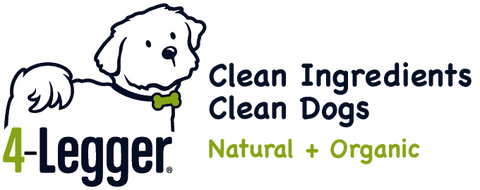What the FDA’s Food Dye Phase Out Means (And Doesn’t Mean) for Dog Shampoo and Food
In April 2025, the U.S. Food and Drug Administration (FDA) announced a voluntary phase-out of certain petroleum-based synthetic dyes in the nation's food supply, citing potential risks to human health and a move toward safer, more natural alternatives.
This includes commonly used food colorants like Red #40, Yellow #5, Yellow #6, Blue #1, Blue #2, and Green #3-dyes that have long been under scrutiny for potential health links.
🔴 Red #40 (Allura Red AC)
-
Potential cancer link: Animal studies have raised concerns. A 2016 study in Toxicology Reports linked Red #40 to DNA damage in mice.
-
Other concerns: It may cause hypersensitivity reactions and has been associated with hyperactivity in children.
-
EU status: Allowed but with warnings. The EU requires warning labels about possible behavioral effects in children.
🟡 Yellow #5 (Tartrazine)
-
Potential cancer link: Less direct evidence for cancer, but some animal studies have shown DNA damage and genotoxic effects.
-
Other concerns: Linked to asthma, hives, and hyperactivity. May contain traces of benzidine, a known carcinogen.
🟠 Yellow #6 (Sunset Yellow FCF)
-
Potential cancer link: Animal studies have shown an increase in tumors, particularly adrenal and testicular tumors in rats.
-
Other concerns: Behavioral effects and allergic reactions are documented.
🔵 Blue #1 (Brilliant Blue FCF)
-
Potential cancer link: Considered to have low toxicity, but a lack of long-term human studies keeps the door open to concerns.
-
Other concerns: Some evidence of neurotoxicity and allergenic effects, especially when injected (not ingested).
🔵 Blue #2 (Indigo Carmine)
-
Potential cancer link: Some studies in rats have shown an increased incidence of brain tumors, but findings are not conclusive.
-
Other concerns: Generally considered low risk, but it's still under ongoing review in some countries.
🟢 Green #3 (Fast Green FCF)
-
Potential cancer link: Animal studies linked it to bladder and testes tumors, though it's approved by the FDA at low levels.
-
Other concerns: Less commonly used, and often replaced with other colors due to these concerns.
🧪 Key Reports and Reviews:
-
California Office of Environmental Health Hazard Assessment (OEHHA), 2021: Found evidence that synthetic food dyes can affect neurobehavior in children and may pose long-term health risks.
-
Center for Science in the Public Interest (CSPI): Has long advocated for bans on these dyes, citing both cancer risks and behavioral effects.
-
FDA: Acknowledges some studies show potential risks but maintains these dyes are safe at regulated levels.
-
EU vs. U.S. Standards: The European Union is more precautionary, often requiring warning labels or banning dyes that are still allowed in the U.S.
You can read the official FDA announcement here:👉 FDA Press Release
But what does this ruling mean for pet products like dog shampoo or even dog food?
Let's break it down:
🚫 Dog Shampoo Is NOT Affected by the Ruling
The FDA's announcement specifically targets food products intended for human consumption. That means the regulation does not extend to human cosmetics, topical pet grooming products, pet food, or household items like soap, shampoo, or detergents - whether for humans or animals.
At 4-Legger, we don't use any synthetic dyes - petroleum-based or otherwise - in any of our USDA Certified to Organic products.
We've long stood against unnecessary, artificial additives that may pose risks to the health of pets (or the planet). Instead, we rely on ingredients that are safe, non-toxic, and eco-friendly.
So while the FDA's decision doesn't apply to dog shampoo, it further validates the concerns many of us have had for years: synthetic colorants don't belong in products we use on our bodies, or our furry family's bodies.
🐶 What About Dog Food?
Currently, the FDA's food dye ruling applies only to the human food supply. However, it's reasonable to expect that pet parents, especially those who are label conscious, will begin to question the presence of artificial colorants in dog treats and kibble.
Many commercial pet foods still use the same petroleum derived dyes targeted by the FDA, not because they provide nutritional value, but to make the food more visually appealing to humans, not dogs.
Here's the reality:
-
Dogs don't care what color their food is.
-
Artificial colorants in dog food are are not safe
-
Hopefully more awareness of the risks in human food will likely lead to growing consumer demand for transparency and cleaner labels in the pet food industry.
✅ Why 4-Legger Has Always Said "No" to Dyes
At 4-Legger, we've never used synthetic dyes or artificial fragrances.
Our products are certified to organic standards, meaning they're free of artificial colors, toxic preservatives, and synthetic surfactants.
We believe pet parents deserve better. And as regulators begin to catch up with what natural product makers have known all along, we're proud to be ahead of the curve.
💚 Final Thoughts
While the FDA's 2024 announcement does not affect dog shampoos or most pet products directly, it's a timely reminder that what goes in and on our pets matters.
We hope the decision to phase out petroleum-based food dyes from the human food supply inspires greater scrutiny across all industries, including the pet industry.
As always, read your labels. Know your ingredients. And trust brands that put transparency and health first.





